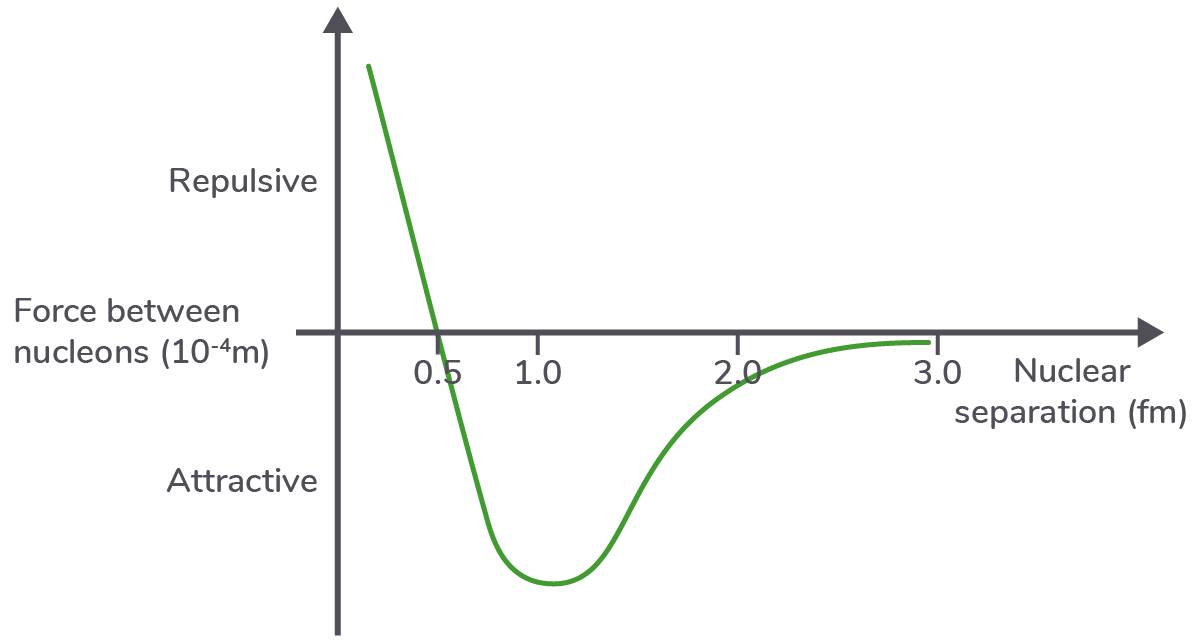Fundamental Forces
This lesson covers:
- The four fundamental forces
- The forces acting within the atomic nucleus
- The properties of the strong nuclear force
- Why some nuclei are unstable
The Four fundamental forces
There are four fundamental forces which govern the behaviour of all matter.
| Fundamental Force | Particles Affected | Exchange Particle |
|---|---|---|
| Strong Nuclear | Hadrons only | Pions |
| Electromagnetic | Charged particles | Virtual Photon |
| Weak Nuclear | All types | W, W boson |
| Gravity | Particles with mass | Graviton |
Forces within the atomic nucleus
There are several forces acting on the particles (nucleons) inside an atomic nucleus:
- Electromagnetic force - Causes protons to repel each other due to their positive charges.
- Strong nuclear force - holds protons and neutrons together in the nucleus.
- Gravitational force - Attracts nucleons together due to their mass.
The electromagnetic repulsion between protons is much stronger than their gravitational attraction. So an additional strong attractive force is needed to hold the nucleus together - the strong nuclear force.
Properties of the strong nuclear force

Experiments show the strong nuclear force:
- At distances less than about 0.5 fm, the strong nuclear force is repulsive.
- Above 0.5 fm, the strong nuclear force is attractive.
- The strong nuclear force is most attractive at distances of around 1 fm.
- Above 3 fm the strong nuclear force has negligible effect.
- Acts on both protons and neutrons.
Nuclei can be stable or unstable:
Stable nucleus - If the strong nuclear force is strong enough it will not decay.
Unstable nucleus - If the strong nuclear force is too weak it will decay.